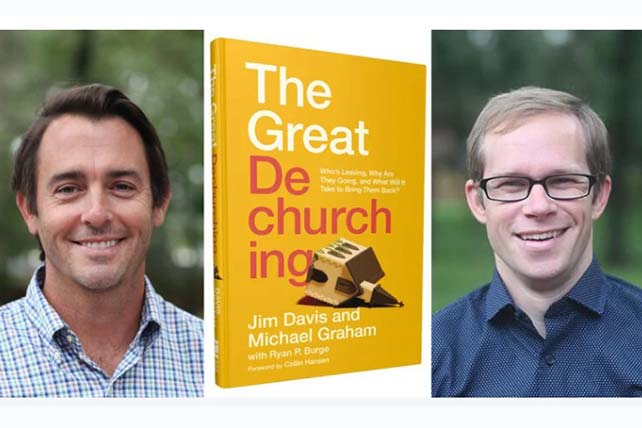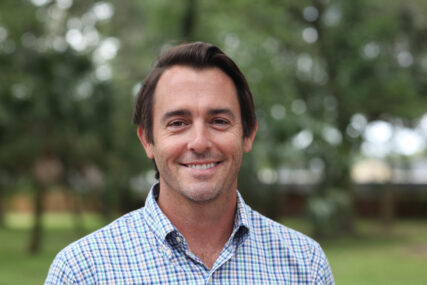(RNS) — Jim Davis and Michael Graham knew something was up in their hometown of Orlando, Florida.
But they couldn’t put their finger on it.
At the time, both were pastors at Orlando Grace Church, an evangelical congregation, and saw a study showing their community had the same percentage of evangelicals as less traditionally Christian cities like New York and Seattle. Their city also ranked low on a list of “Bible-minded cities” — with a profile more akin to cities with secular reputations than Bible Belt communities like Nashville, Tennessee, or Birmingham, Alabama.
Which didn’t make any sense to them.
Orlando was home to the headquarters of Cru, a major campus ministry, along with Wycliffe Bible Translators and other major Christian nonprofits, as well as booming and influential megachurches like First Baptist and Northland Church.
RELATED: Michael Graham and Jim Davis: What ‘The Great Dechurching’ Means for Church Leaders
And Orlando felt different from New York or Seattle.
“Then it hit us — it’s because our people used to go to church,” said Davis.
He and Graham knew of a number of people who had stopped going to church, and the two pastors started wondering how common that was. They began looking for data, and while there were studies of the so-called nones — those who do not identify with any faith group — there were few about churchgoing habits.
Eventually, they decided to do one of their own.
With the help of friends, they raised about $100,000 and enlisted the help of two political scientists who survey religious trends in the U.S. — Ryan Burge at Eastern Illinois University and Paul Djupe of Denison University — to create what they think is the largest ever study of folks who stopped going to church.
That study, combined with other data about America’s changing religious landscape, led them to a sobering conclusion.
“More people have left the church in the last twenty-five years than all the new people who became Christians from the First Great Awakening, Second Great Awakening, and Billy Graham crusades combined,” Davis and Graham write in their new book, “The Great Dechurching: Who’s Leaving, Why Are They Going, and What Will It Take to Bring Them Back?”
The book and the study that prompted it were driven by both curiosity and stubbornness.
“If we’ve got a question that we need an answer to, we’re not going to stop until we get it,” said Graham, who is now program director for the Keller Center, which helps churches adapt to the changing religious landscape.
Davis and Graham said they wanted the study to be informative and rigorous, which is why they decided to work with academic researchers. The study included a survey of 1,043 Americans to determine the scope of dechurching — which was defined as having attended service at least once a month in the past and now attending less than once a year. That initial survey found that about 15% of Americans are dechurched.
A second phase included a survey with detailed questions for 4,099 dechurched Americans. Their answers were sorted in clusters using machine learning, said Burge — creating groups of people who had statistically similar answers to questions.
“It’s a wonderful way to look at religion without any sort of bias or prejudice,” said Burge. “It just lets the data speak for itself.”
The book appears to have struck a nerve with both church leaders and the broader public. Data from the book was featured in a series of New York Times columns about the changing religious landscape and what it might mean for American culture.
Burge said the book’s surveys build on previous studies of the nones as well as studies showing the decline of congregational life in the United States. The 2020 Faith Communities Today study, for example, found the median congregation in the United States stood at 65 people, down from 137 two decades ago.
A recent look at the impact of the impact of the COVID-19 pandemic found that the median congregation in 2023 is now 60 people. Meanwhile, the Pew Research Center projects that nones could make up as much as half the population by 2070.
“For a long time, the church declined and no one really cared,” said Burge. “And now people are seeing the decline and saying, ‘Wow, this is really becoming a problem now.’ We have reached an inflection point where people are talking about religion in a more thoughtful, nuanced, statistically driven way.”


